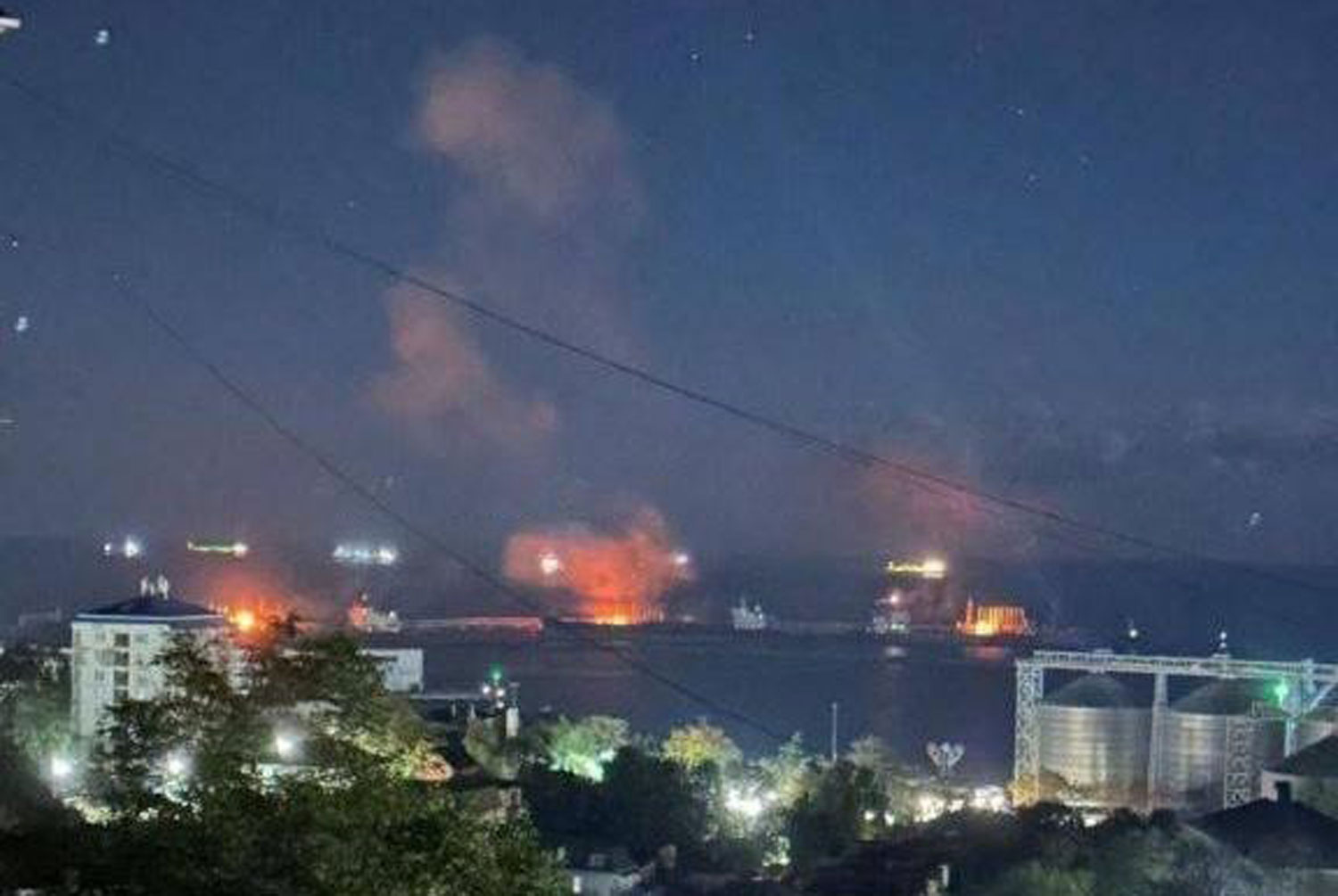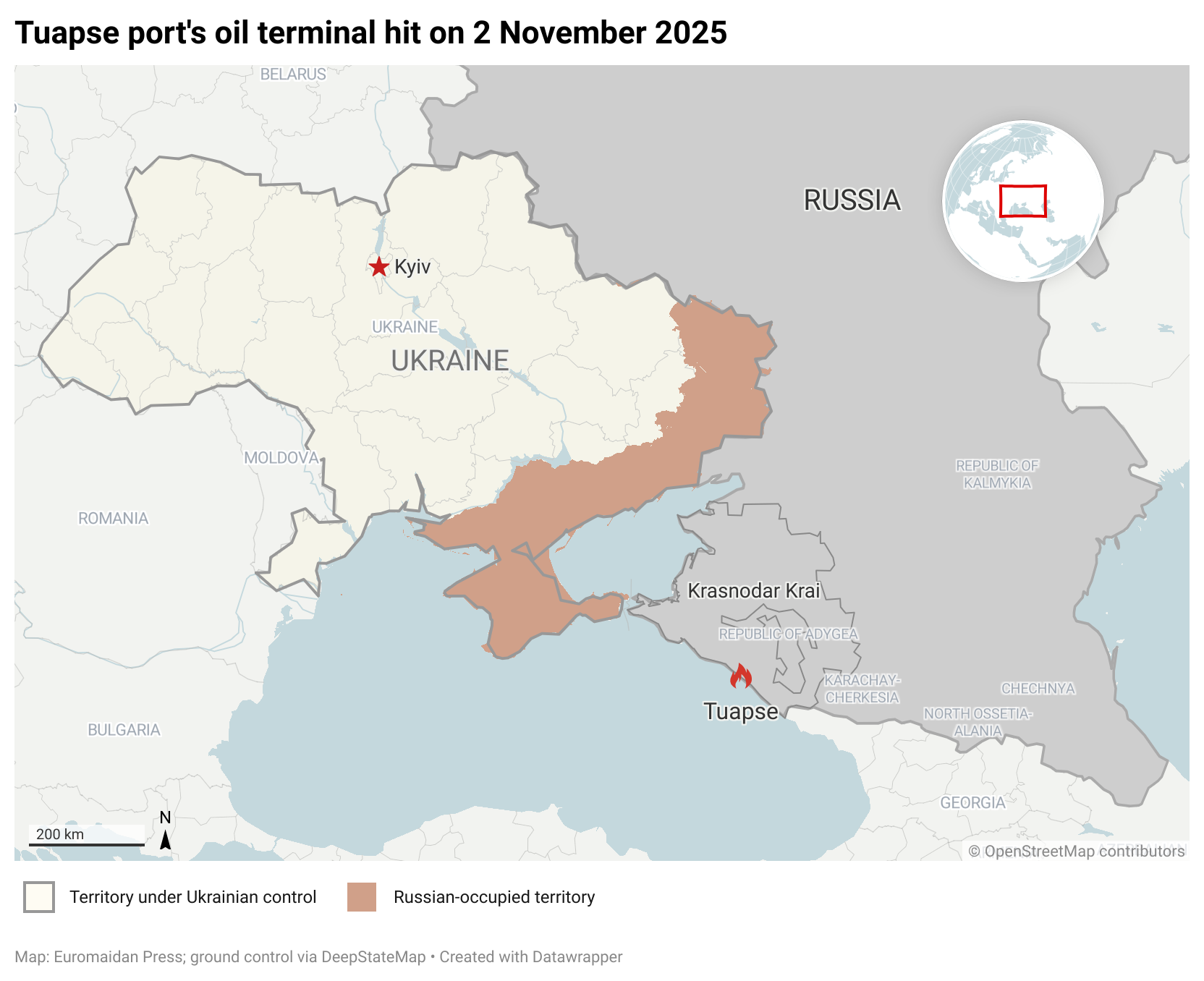Russia’s Black Sea port of Tuapse has suspended fuel exports and halted crude oil processing following a Ukrainian drone strike, forcing three tankers to anchor offshore empty while a 3.6-kilometer (2.2-mile) oil slick spreads into the sea.
The 2 November shutdown illustrates how Ukraine’s systematic campaign is compounding damage: facilities that previously resumed operations after strikes now face extended paralysis.
The Tuapse oil refinery suspended crude processing after the strike damaged port infrastructure. At the same time, three tankers conducting loading operations sit anchored, unable to complete their scheduled exports to Asian buyers, according to Reuters, citing industry sources and LSEG vessel tracking data.

Flames light up Tuapse Bay as Ukrainian drones target Russia’s Black Sea oil terminal again
Cumulative campaign
The Tuapse halt exemplifies how Ukraine’s systematic strikes are translating into measurable economic retreat. Ukrainian forces have conducted more than 160 precision strikes on Russian oil refineries and energy facilities in 2025, according to Security Service of Ukraine chief Vasyl Malyuk, who described the operations as “kinetic sanctions.”
BBC Verify documented 21 of Russia’s 38 large refineries struck since January 2025, with attacks reaching record levels in August and remaining elevated through October—already 48% more than all of 2024.
The International Energy Agency projects processing rates will remain suppressed until at least mid-2026.
The economic consequences are now appearing: Russia’s fossil fuel revenues in September fell to €546 million ($580 million) per day—half of September 2022 levels—while seaborne oil product exports saw a steep 13% month-on-month decline, which the Centre for Research on Energy and Clean Air attributed directly to “Ukrainian drone strikes on Russian oil refineries and ports.”
Sanctions amplify strike campaign impact
The timing compounds the pressure: three weeks before the Tuapse strike, the US Treasury sanctioned Rosneft and Lukoil, including the RN Tuapse Oil Refinery subsidiary. Major buyers simultaneously pulled back: Indian state refineries reduced their Russian crude imports to the lowest level since May 2022, while Chinese state processors canceled cargoes, potentially affecting 400,000 barrels per day.
The result: 380 million barrels of Russian crude now sit on tankers at sea, up 8% since September, as refiners refuse to discharge sanctioned cargoes, Bloomberg vessel-tracking data shows.
BBC satellite imagery analysis captured the damage in Tuapse, revealing an oil slick extending 3.6 kilometers into the Black Sea from a terminal that handles 12 million tons annually and exports 90% of its production, primarily to China, Malaysia, Singapore, and Türkiye—markets central to Russia’s sanctions-evasion network.
Trending Now
From tactical strikes to strategic paralysis
Ukraine’s strategy targets both refining capacity, which produces high-margin products, and export terminals, which generate revenue. SBU chief Malyuk stated on 31 October that strikes have forced a 37% idle rate of refining capacity. By disrupting both processing and export infrastructure, the campaign forces Russia to sell lower-margin crude while reducing absolute volumes.
However, some analysts believe that disruption is temporary. “Down the line, you will see that more and more of the disrupted Russian oil, one way or another, finds its way to the market,” Gunvor Group CEO Torbjörn Törnqvist told Bloomberg. “It always does somehow.”
Still, the Tuapse shutdown illustrates how systematic targeting can lead to cumulative macroeconomic degradation.
Facilities that survived previous strikes with temporary disruptions now face operational paralysis as damage accumulates, buyers retreat, and repairs require sanctioned equipment that is unavailable under international restrictions—turning repeated tactical strikes into a strategic economic retreat.

